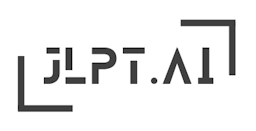

N3
音読み:tou
訓読み:ataru, ateru, masa.ni, ate
トウtou
あ.たるataru
あ.てるateru
まさ.にmasa.ni
あ.てate
Hit, appropriate, present
Imagine an archery target - a round board with concentric circles. By hitting the center of the target, you achieve accuracy and correctness, representing the meaning of '当'.
The kanji '当' is frequently encountered in JLPT N3 level materials. Its various readings and meanings make it important for both kanji and reading comprehension sections of the exam.
彼は的確な意見を述べました。
He expressed a precise opinion.
かれはてきかくないけんをのべました。
kare wa tekikaku na iken o nobemashita.
当店のサービスは最高です。
The service at this store is excellent.
とうてんのサービスはさいこうです。
tou ten no saabisu wa saikou desu.
申し込み当日に参加することができます。
You can participate on the day you apply.
もうしこみとうじつにさんかすることができます。
moshikomi toujitsu ni sanka suru koto ga dekimasu.